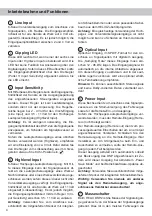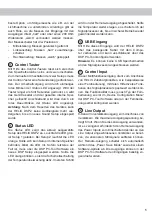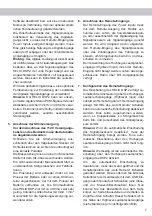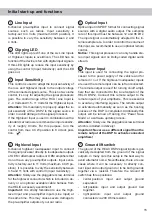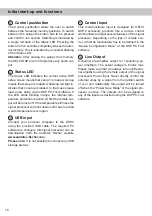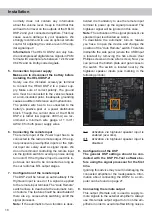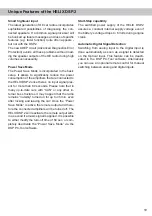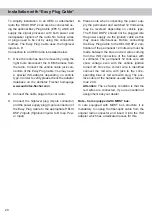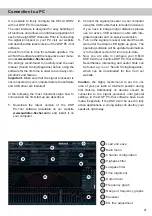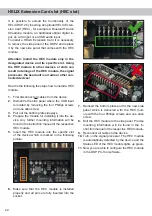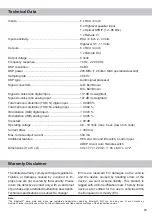
17
Installation
Connection of HELIX DSP.2 to the head unit/car
radio:
Caution:
Carrying out the following steps will re-
quire special tools and technical knowledge. In or-
der to avoid connection mistakes and / or damage,
ask your dealer for assistance if you have any ques-
tions and follow all instructions in this manual (see
page 13). It is recommended that the device will be
installed by an authorized HELIX dealer.
1. Connecting the pre-amplifier inputs
Use the correct cable (RCA / cinch cable) to
connect these inputs to the pre-amplifier /
lowlev el / cinch outputs of your car radio. Each
input can be assigned to any output using the
DSP PC-Tool software. The automatic turn-on
circuit does not work when using the pre-ampli-
fier inputs. In this case the remote input has to
be connected to activate the HELIX DSP.2.
Important:
It is strictly forbidden to use the
Highlevel Input
and pre-amplifier inputs (
Line
Input
) at the same time. This may cause severe
damage to the pre-amplifier outputs of your car
radio.
2. Connecting the highlevel speaker inputs
The highlevel loudspeaker inputs can be con
-
nected directly to the loudspeaker outputs of an
OEM or aftermarket radio using appropriate ca-
bles (loudspeaker cables with 1 mm² / AWG 18
max.).
We recommend the following channel assign-
ment if a common car radio will be connected to
the signal processor:
Channel A = Front left
Channel B = Front right
Channel C = Rear left
Channel D = Rear right
Actually it is not mandatory to use all high level
speaker inputs. If only two channels will be con-
nected we recommend to use the channels A
and B. Make sure that the polarity is correct. If
one or more connections have reversed polar
-
ity it may affect the performance of the signal
processor. If this input is used the remote input
does not need to be connected as the signal
processor will automatically turn on once a
loudspeaker signal is received.
3. Adjustment of the input sensitivity
Attention:
It is mandatory to properly adapt
the input sensitivity of the DSP.2 to the sig-
nal source in order to avoid damage to the
signal processor.
If you want to change the input sensitivity use
the control 3 (see page 15 item 3;
Input Sensi
tivity
). The setting of the control affects both the
lowlevel and the highlevel inputs!
Follow the subsequent steps to perfectly adapt
the signal processors input sensitivity to your
audio source by using the control:
1. Don‘t connect any amplifiers to the outputs
of the HELIX DSP.2 during this setup.
2. Turn on the signal processor.
3. Adjust the volume of your radio to approx.
90 % of the max. volume and playback a
1 kHz full scale test tone (0 dB) via CD drive.
4. If the
Clipping LED
already lights up, you
have to reduce the input sensitivity via con
-
trol (page 15 item 3;
Input Sensitivity
) until
the LED turns off.
5. Increase the input sensitivity by turning the
control clockwise until the LED lights up.
Now turn the control counterclockwise until
the
Clipping LED
turns off again.
If the
Highlevel Input
is used in combination
with a standard car radio we recommend an in-
put sensitivity of roughly 9 Volts. For this pur
-
pose turn the control from max. CCW position
to 8 o’clock position.
4. Connecting a digital signal source
If you have a signal source with an optical digi-
tal output you can connect it to the signal pro-
cessor using the appropriate input. In standard
configuration the HELIX DSP.2 automatically
activates the used digital input if a digital audio
signal is detected. This function can be deac-
tivated via the DSP PC-Tool software. Alterna
-
tively you can manually activate the digital input
if you are using the optional remote control. The
automatic turn-on circuit does not work when
the digital input is used. Therefore it is manda-
tory to connect the remote input of the
Power
Input
. Please note that it is possible to connect
a source to the digital input and the
Highlevel
Input
or the
Line Input
at the same time.
Important:
The signal of a digital audio source


